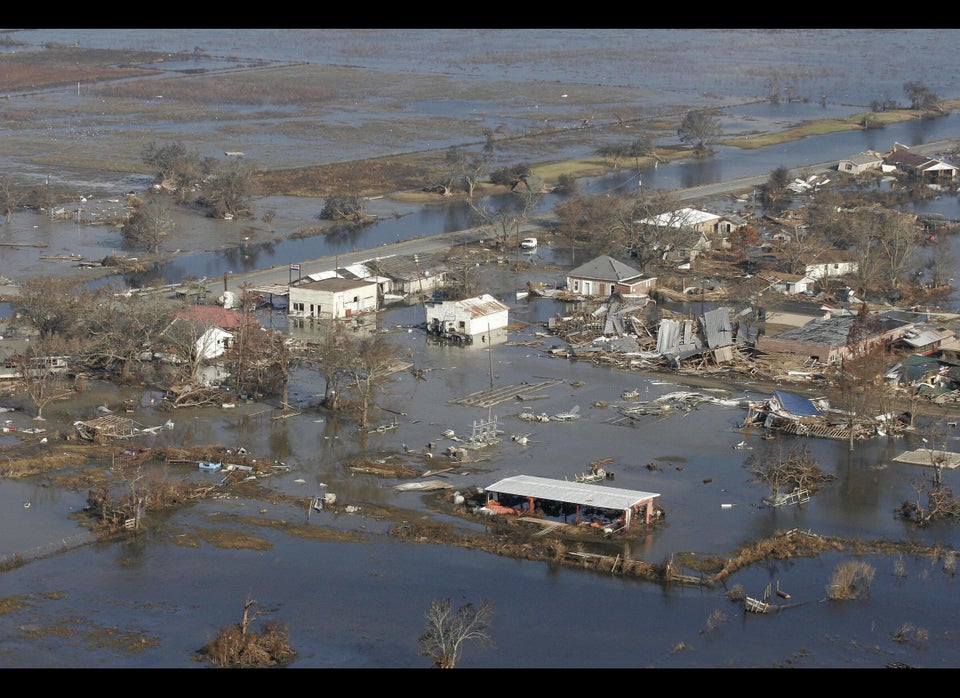As Superstorm Sandy was headed towards New Jersey, something wasn't sitting right with Michelle Mallozzi.
Many of the neighbors on her street had been through many previous hurricanes and were determined to stay and ride out the storm at their Tom's River homes. Plus, her street was only under a voluntary evacuation order, unlike other parts of town.
Still, Mallozzi, a longtime resident of Ocean County, looked elsewhere for a place to stay during the storm only to find all of the hotels in the area were booked.
Eventually, out of options, she planned to wait out Sandy at home with her daughter and two cats. She was well prepared with a generator, canned goods, water and other supplies.
However, the day of the storm, a gas leak occurred at her property. While outside standing in the torrential downpour with representatives from the gas company, a realtor that she knew was checking on a house across the street. One thing led to another, and Mallozzi was able to stay at the realtor's home in north Tom's River.
By evacuating, Mallozzi ensured her family would be safe. Unfortunately, her house was not.
Mallozzi returned home several days later to find her house suffered major damage from the floodwaters, and to this day, she still has not been able to return home. Currently, she rents a house in Tom's River, which is away from the water.
Many of her neighbors who chose not to evacuate were trapped on the second floor of their homes and needed to be rescued as Sandy struck.
Not only is ignoring evacuation orders dangerous for residents, because they're putting themselves at risk, but they are also jeopardizing first responders, said Vince Jones, the emergency management coordinator for Atlantic County, which neighbors Ocean County.
"They don't realize the risk that they put the first responders in when they choose not to leave," he said.
At the height of Sandy, Jones estimated there were hundreds of calls for help from residents who didn't follow evacuation orders.
Throughout Atlantic County, there were thousands of emergency responders at the ready to help stranded residents during Sandy.
"Some of the first responders sustained injuries, thankfully nothing severe," Jones said.
He added that it's not a one-to-one ratio. Often, it takes several responders to rescue one person who didn't evacuate.
One reason residents may have ignored evacuations during Sandy, Jones said, is the perception that Hurricane Irene in August of 2011 was not as destructive as originally forecast.

This Oct. 31, 2012 file photo shows residents of Breezy Point walk through flood waters and ride on police trucks as they leave behind destruction from superstorm Sandy in New York. (AP Photo/Frank Franklin II, File)
Jones said Irene was the first mandatory evacuation order issued in his county and many people did follow evacuation orders.
However, Sandy ended up walloping New Jersey much harder than Irene, and those who decided to stay behind during Sandy ended up getting forced out of their homes by the storm.
"In some respects, the storm made the decision for those people to have to leave," Jones said.
During Irene, Mallozzi stayed with her cousin and when she returned home, everything was fine, with the exception of minor street flooding.
After her experience with Irene, Mallozzi said she never really considered taking much with her when she evacuated for Sandy.
Looking back, Mallozzi said she would have packed a lot better, because she said her family lost everything. For those that have time to prepare in the event of an evacuation, she offered some advice.
"Get as much stuff as you know you need out of your house," she said. "Anything that's of value, because if your house goes under, everything goes with it."
Jones said his office makes sure preparedness is talked about all year long, not just during hurricane season.
"We're constantly, constantly throughout the year, telling people they have to have a plan, be prepared to evacuate," Jones said.
While the county still uses TV and radio to broadcast messages, the introduction of social media platforms such as Facebook and Twitter have made a huge impact in helping to reach the public year-round.
One of the messages commonly sent out during an evacuation situation is where residents can go if they don't have an option.
As part of the emergency response plan, shelters are set up and public transportation is offered.
Still, Jones said it comes back to people having a plan and taking accountability. If they have the option to stay with relatives who live outside of the danger zone, they should definitely take that option, he said.
The changeable nature of these storms is another reason residents shouldn't take the chance as evident with the sharp contrasts in the way Sandy and Irene evolved.
"My number one thing is, you don't know what's really going to happen," Mallozzi said. "And if you take a chance, you could wind up being in a house that floods."
Going forward, Mallozzi said she would definitely evacuate if required.
"If they ever announce another hurricane or tropical storm, I'm outta here," she said.
